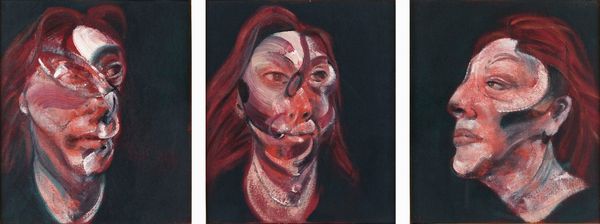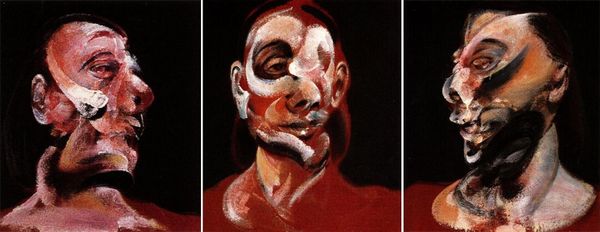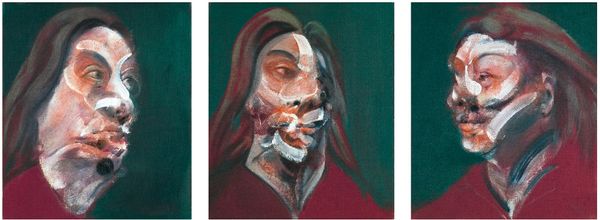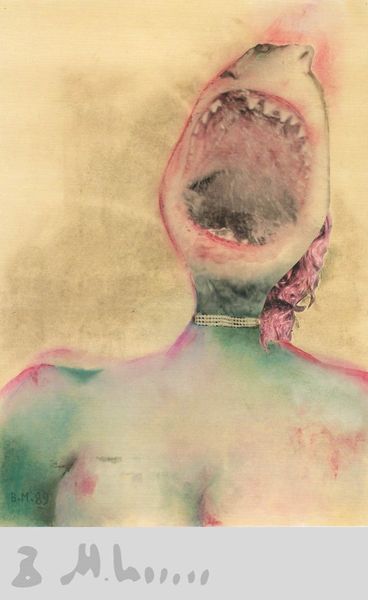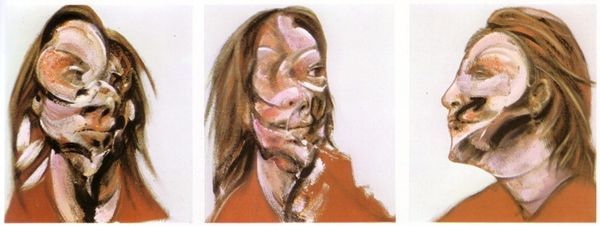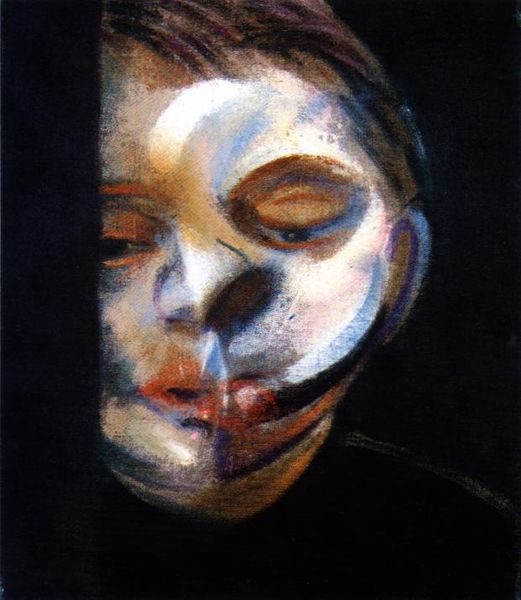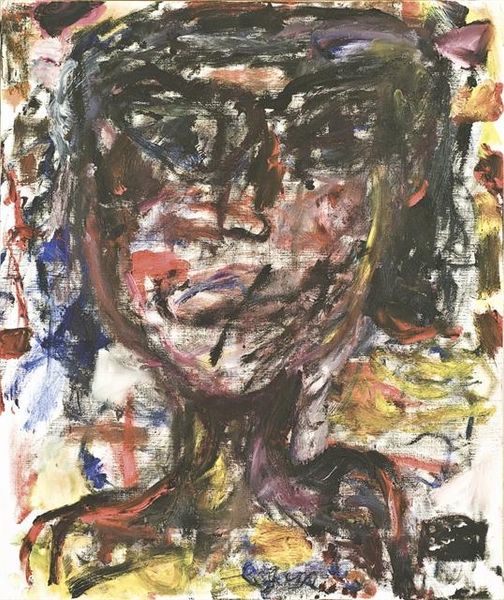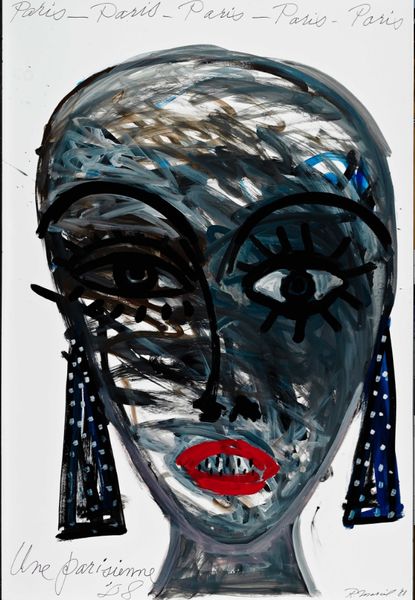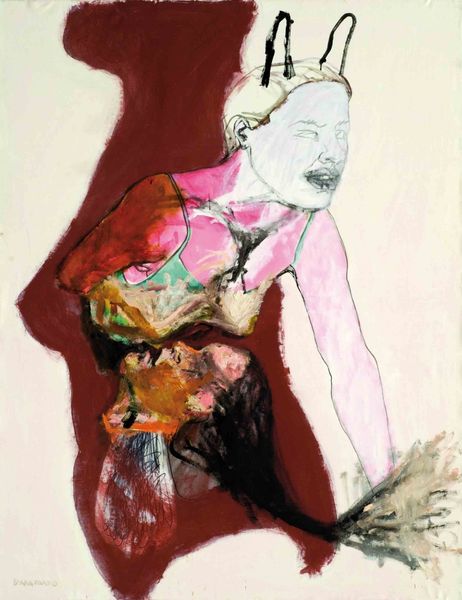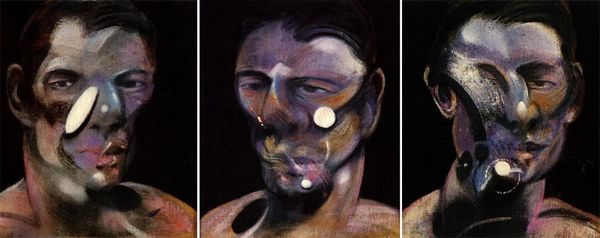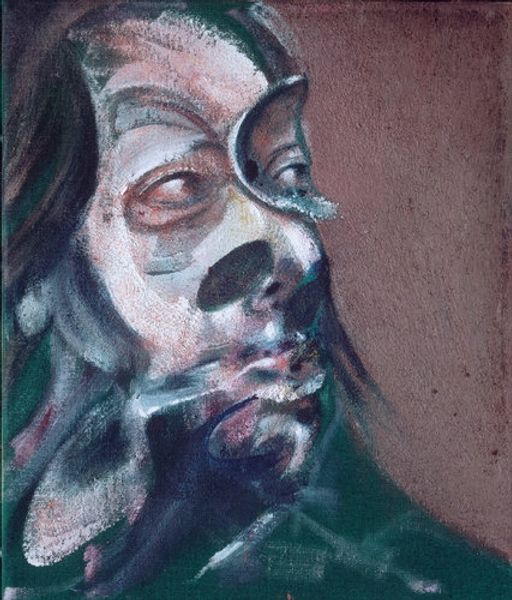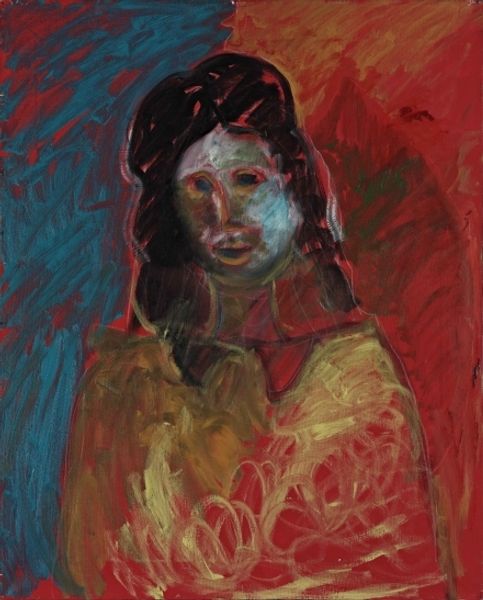
Copyright: Francis Bacon,Fair Use
Curator: Francis Bacon's "Three Studies for Portrait of Henrietta Moraes," from 1969. It's quite something, isn't it? Bacon's portraits often feel raw and deeply psychological. Editor: It does, undeniably intense. The way the faces are distorted is initially off-putting, yet somehow still compelling. There’s this almost visceral quality achieved through color and expressive brushstrokes. Curator: Well, Bacon’s work emerged during a period marked by post-war angst and existentialism, reflecting societal uncertainties and the search for meaning. He portrays the human figure as vulnerable and grotesque, challenging traditional notions of beauty and representation. Henrietta Moraes herself was part of Bacon’s social circle, an icon in London’s art scene, so there’s a layer of biography here, too. Editor: It’s the abstraction that gets me. Look how he breaks down the form using thick impasto; see that the paint is aggressively applied! Those vibrant reds around the mouth are particularly striking – almost violent. They completely warp conventional expectations around portraiture. Curator: Bacon was influenced by photographs, often distorting and reinterpreting images from newspapers and film stills. It's been argued that his approach reflects the way we experience fragmented and mediated reality, mirroring anxieties of modern existence and alienation in an increasingly technological world. He forces us to confront the messy reality of human existence and the inevitability of decay. Editor: Yet, even with the unsettling depiction, there’s also remarkable visual harmony at play. That subtle lilac backdrop seems to strangely unify these fractured portraits, establishing this eerie, serene backdrop against all of the turmoil within each panel. Curator: Precisely. He wasn’t just aimlessly splashing paint. Every deliberate choice served to amplify tension and prompt self-reflection from his viewers about their perceptions concerning the self and humanity's role within society. Editor: Yes, this certainly provides an entry point into examining Bacon's technique regarding color composition that adds another layer on top of his emotional display within “Three Studies…” Curator: An encounter with Bacon definitely invites self-reflection within the framework of society. Editor: A brutal reminder that we often mask the grotesque beneath appearances.
Comments
No comments
Be the first to comment and join the conversation on the ultimate creative platform.
